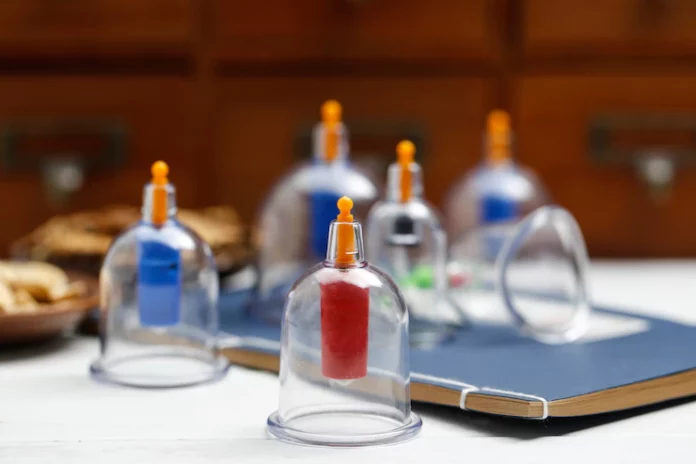If you are interested in knowing what does cupping therapy actually do, then you have come to the right place. This treatment can increase blood flow, reduce inflammation, and lower pain and stress. The science behind the therapy is still a mystery. Athletes like Michael Phelps have benefited from the therapy, but it is still a mystery as to how it works. Get best wet cupping course in Sydney!
Increases blood flow
There are several benefits associated with cupping therapy, which includes increased blood flow. The acupuncturist will ask you questions about your symptoms and health history before performing the procedure. The acupuncturist will then apply heat or suction to your skin. After the treatment, the area may be bruised, but this is temporary and goes away within a week. Afterwards, you should drink plenty of water and eat healthy foods. After the session, you should not swim or shower for three hours. Get holistic hijama in Melbourne by Cura Co!
This ancient massage uses suction to create negative pressure on the tissues. Instead of compressing the tissues, the suction pulls stagnant blood and toxins to the skin level. These wastes and toxins are then absorbed by the body’s lymphatic and circulatory systems. This helps the body eliminate harmful toxins and replenish essential nutrients. Additionally, cupping releases congested muscles, loosens adhesions, and retrains myofascial structures.
Cupping also increases blood flow to the area. The healing process is accelerated by the increased circulation. Increasing circulation can also attract immune cells to the affected areas. This process also promotes the formation of new blood vessels and connective tissue in the affected area.
Relieves pain
Cupping therapy is a great way to ease pain and improve the health of your skin. It can also be used to treat respiratory problems and improve digestion. Some people have even reported that cupping can help alleviate the symptoms of certain diseases and accidents. The negative pressure of the cups can help your body eliminate excess fluids, and boost your immune system.
During cupping therapy, glass cups are placed over the skin. The air in the cup cools and creates a vacuum that pulls blood towards the heart and lungs. The cup is placed on the body for about two to three minutes while energy flows through it. The skin may become reddened and sore during the session.
Cupping therapy stimulates the nerve fibers of the skin, which can be beneficial for pain. Research has shown that stimulating large fibers can reduce pain intensity by blocking the transmission of pain signals. This therapy may also influence the activities of the small fibers, which stimulate pain receptors while inhibiting the activity of inhibitory cells.
Cupping therapy may have positive effects on symptoms of carpal tunnel syndrome. This is caused by compression of a median nerve in the carpal tunnel. Carpal tunnel syndrome patients often feel numbness, burning pain, and decreased grip strength. Combined with physiotherapy, cupping therapy can improve the quality of life of patients with carpal tunnel syndrome.
Relieves stress
If you are suffering from anxiety, depression, or chronic stress, cupping therapy may be right for you. This technique has been shown to lower blood pressure, promote relaxation, and improve serotonin levels in the brain. These chemicals are associated with happiness, and can also help people with sleep problems.
The treatment relaxes the muscles and stimulates them to release tension. In addition, many people experience deep sleep after a cupping therapy session. Cupping therapy is a type of massage that allows the patient to relax and feel calm. During a session, the patient will lie still for about 10 to 20 minutes.
When you suffer from stress, it’s normal to feel tense muscles and strained nerves. You may also feel fatigue and headaches. Cupping helps alleviate these problems by increasing blood flow to the area. In addition, it promotes the flow of energy and qi throughout the body. This in turn helps reduce levels of cortisol, a hormone related to anxiety.
Acupuncture is another form of cupping. This type of therapy works to remove toxins from the body. The cups’ suction helps to break up congestion by drawing bloodstream and lymph towards the lungs. This in turn improves respiratory function and increases oxygen intake. In Chinese medicine, cupping therapy and acupuncture are often combined.
Reduces bruising
Cupping therapy is one of the best ways to treat injuries. Cupping therapy promotes healing and blood flow to the injured area. This technique is often used in combination with other treatments such as acupuncture and dry needling to help alleviate pain. It works by creating a micro-trauma in the injured area, which triggers the body’s own healing process.
A bruise is the result of a blunt injury that breaks the blood capillaries underneath the skin. These capillaries become brittle and healing fluids rush to the affected area. The patient may feel pain during the procedure. Suction also draws toxins to the surface of the skin.
A cupping session is performed by a trained practitioner. The practitioner places round cups on the patient’s body. The cups are heated to create suction, and then placed on the affected area. Depending on the degree of suction, the cups may create a mild or significant amount of soreness or bruising. This temporary discomfort will disappear in a week.
People with open wounds or chronic diseases are not recommended for this technique. Those on blood thinners, who are pregnant or lactating, and those with high blood pressure should consult with a healthcare provider before using the therapy. If you are unsure about whether or not cupping is right for you, consider arranging a free 15-minute phone consultation. You can then make an informed decision.
Side effects can be minimized
The practice of cupping is a vital component of Traditional Chinese Medicine and has been practiced for millennia. Though modern science is still discovering the exact mechanisms of cupping’s effect on the body, studies have shown that it has a wide range of benefits. These findings have made cupping therapy a more popular treatment option in modern medicine.
Cupping therapy can treat a wide range of musculoskeletal conditions, including chronic pain. The treatment involves releasing tightened myofascial (a network of connective tissues that surrounds individual muscle cells). Tight fascia inhibits movement and functionality. By targeting this network, cupping can increase efficiency of movement and improve posture. Some studies have shown that cupping may influence “gate control” theory of pain. This theory states that the presence or absence of painful stimuli will close the nerve gate to the painful input.
Before undergoing cupping therapy, patients should disclose all existing medical conditions and medications to their practitioner. A detailed medical history will help minimize the possibility of adverse effects. A physical exam will allow you to assess the patient’s condition and ensure that cupping is safe. Generally, cupping treatments can be safely performed without adverse side effects, but some people may experience them during or after treatment.
The main benefits of cupping treatment include improving blood flow and stimulating the autonomic nervous system, the brain’s own self-regulating system. This helps restore balance and supports digestive health and heart health. In addition, studies have shown that cupping correlates with elevated levels of blood oxygen, making it beneficial for patients with pulmonary disorders. It can also be used to treat colds and flus.



